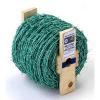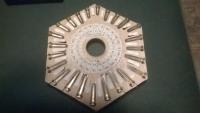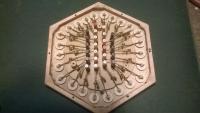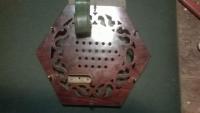-
Posts
81 -
Joined
-
Last visited
About banjojohn
- Birthday 12/16/1957
Contact Methods
-
Website URL
http://www.greyhoundmusic.co.uk
Profile Information
-
Gender
Male
-
Interests
Playing and composing folk music for a variety of instruments including English concertina. I have become interested in concertina maintenance and repair work and am in the process of restoring a number of antique instruments. Hosting a folk music session in a local pub and compiling a web site to support this and through which to publish tunes which I have written and recorded.
See www.greyhoundmusic.co.uk -
Location
Wantage, Oxfordshire
Recent Profile Visitors
762 profile views
banjojohn's Achievements

Advanced Member (3/6)
-
That's interesting 'D', thanks for your insight! So just to summarize the main points you have made: 1870 approx. date of S/n 16011 1873 approx. date of S/n 19070 (with Lachenal & Co pan labels) and name change from Louis Lachenal to Lachenal & Co. If this dating of S/n 16011 is correct, there would have been no need for the pan labels to have the 'Louis' cut from them, as it was made before the name change.. So I have a conundrum, in that when I replace the baffles, what label do I glue to the RH side... A Louis Lachenal label might be correct to the time of manufacture, but this instrument may well have had some other retailer's label.. I don't suppose I will ever know who that would have been?
-
I bought at set of punches on ebay, which struggle to cut through just one layer of thin leather, any tips on a suitable method of re-grinding / sharpening?
-
From a quick glace at Lachenal trebles from S/n 10577 to 28070 (in the Concertina Museum collection), it would appear that two types of action pivots were being used, the bent brass staple and the curved top slotted brass sheet. Generally, it would seem that the staples were used on the budget models and the slotted sheet on the more expensive ones, with the exception of S/n 20678 which is a budget model with the slotted sheet pivots. Conclusion: I don't think you could use this as a means of dating...
-
Not that unusual... Ok, so this is evident on a number of instruments, but for what reason was it done?
-
Thanks Mike, Theo and Stephen, for your replies here, but any thoughts about the cut down reed pan labels?
-
Can anyone advise where these very small diameter counter sunk steel wood screws can be obtained in the UK (in small numbers!)... ? Also replacement case hinges and their screws too?
-
I have recently acquired this instrument, which is missing it's fret baffles and hence also missing the RH end label. After opening up to check the S/n, I noticed that the inner reed pan paper dials had been so cut as to remove the maker's name and address. I thought this was a bit strange, as other 're labelled' Lachenals which I have seen, still retain the full reed pan labels. Has anybody seen this on any other instruments, or offer any explanation as to why this might have been done? Also of note is the fact that there are valves fitted to all the highest notes, I had understood that this was incorrect, but have also noted it on quite a few similar instruments in the Concertina Museum collection? What is the best source of info for Lachenal Serial number production dating, I have tried to date this but have been unable to find anything helpful on line (my internet search skills seem to be lacking!) I include photos of the action and fret end to aid indentification/dating:
-
Post now withdrawn.
-
Ah, thanks Alex... Erm it's all gone back to normal now!!!
-
For some reason I am unable to post 'smileys' into these text editing windows (or for that matter any other text variations, as all icons at the top are 'greyed out' and un-selectable). Perhaps I would also have put a smiley face on my post too, if I had been able to... ? :-)
-
I have only recently become a member of this discussion forum and until now, very pleased to say that I have had extremely positive, informative and encouraging replies to post I have made. Peter, how do you suppose that I have been reading old threads for 4 years and more to the point what is so wrong with that? There is much of interest in posts both old and new. If you have nothing better to do on New Years Eve at 11 mins to midnight, than to criticise other members posts, then I seriously suggest that you are the one who needs to 'get a life'.... Big time!
-
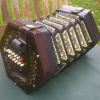
Concertina Maker Or Distributer... W Coleman & Co
banjojohn replied to banjojohn's topic in Concertina History
I bought this instrument as a restoration project, with the view of getting it into a reasonable playable condition. However in the light of what I have now found out about it, I am wondering if it has more value in it's totally original condition, a collector's piece? Any advice of this question would be gladly received... -

Concertina Maker Or Distributer... W Coleman & Co
banjojohn replied to banjojohn's topic in Concertina History
Thanks for this Geoffrey! I have just looked at the concertina museum's site and spotted two instruments which look identical in every respect to the W. Coleman labelled one which I have... Both are Ebblewhite labelled instruments. They are referenced C-374 and C-376 see at http://www.concertinamuseum.com/CM00374.htm Noteable matching features of these 'improved concertinas' with the W. Coleman concertina are: 1) Bellows paper pattern 2) Fret work pattern 3) Countersunk fret end screws, with c/s domed washer 4) Action arms and pivots 5) Frameless action plate 6) Surface mounted reed shoes, screwed to reed pan 7) Wedge shaped reed valves 8) Colour of thumb strap leather 9) Attachment of bellows to the bellows frame (looks like there is another fold). I would therefore conclude that the Coleman and the Ebblewhite labelled instruments were by the same maker... I believe that most of these similarities (apart from #2 and #8) are at variance with the design and construction of contemporary English made instruments... -
Mike, I'm interested to know about the tools you have used to cut the discs? What are these tools called and where did you obtain them?
-
Any chance of some photos?


